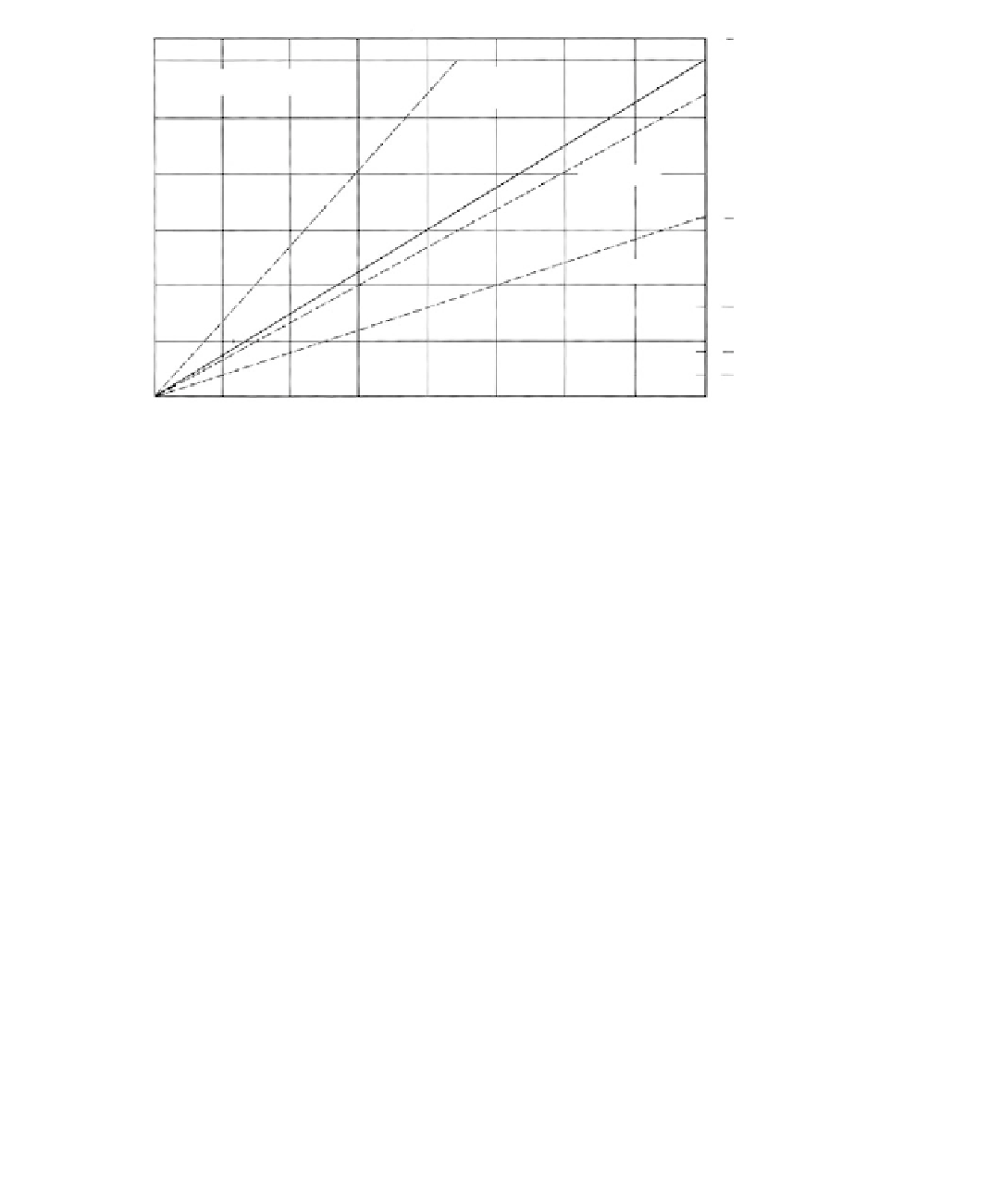Environmental Engineering Reference
In-Depth Information
32
30
Penetration resistance vs
unconfined strength of clay
Sowers:
Clays of low plasticity
and clayey silts
25
Clays of medium
plasticity
20
Terzaghi
and Peck
16
15
Clays of high
plasticity
10
8
5
4
2
0
0
0.5
1.0 1.5 2.0
Unconfined compressive strength, U
c
, tsf
2.5
3.0
3.5
4.0
FIGURE 3.94
Correlations of SPT
N
values with
U
C
for cohesive soils of varying plasticities. (After NAVFAC,
Design Manual
DM-7.1, Soil Mechanics, Foundations and Earth Structures,
Naval Facilities Engineering Command, Alexandria,
VA, 1982.)
TABLE 3.38
Typical Properties of Formations of Cohesive Materials
γ
d
PL
s
u
¯
(tsf)
φ
Material
Type
a
Locations
(pcf)
W (%)
LL (%)
(%)
(tsf)
Remarks
Clay shales (Weathered)
Carlisle (Cret.)
CH
Nebraska
92.4
18
0.5
45
φ
extremely
variable
Bearpaw (Cret.)
CH
Montana
89.9
32
130
90
0.35
15
Pierre (Cret.)
South Dakota
91.7
28
0.9
12
Cucaracha (Cret.) CH
Panama Canal
12
80
45
φ
r
10°
Pepper (Cret.)
CH
Waco, Texas
17
80
58
0.4
17
φ
r
7°
Bear Paw (Cret.)
CH
Saskatchewan
32
116
92
0.4
20
φ
r
8°
Modeio (Tert.)
CH
Los Angeles
89.9
29
66
31
1.6
Intact speci-
men
Modelo (Tert.)
CH
Los Angeles
89.9
29
66
31
0.32
27
Shear zone
Martinez (Tert.)
CH
Los Angeles
103.6
22
62
38
0.25
26
Shear zone
(Eocene)
CH
Menlo Park,
103.0
30
60
50
Free swell 100%;
P
10 tsf
California
Residual Soils
Gneiss
CL
Brazi; buried
80.5
38
40
16
0
40
e
0
1.23
Gneiss
ML
Brazil; slopes
83.6
22
40
8
0.39
19
c
,
φ
Gneiss
ML
Brazil; slopes
83.6
40
8
0.28
21
Unsoaked
Colluvium
From shales
CL
West Virginia
28
48
25
0.28
28
φ
r
16°
From gneiss
CL
Brazil
68.6
36
40
16
0.2
31
φ
r
12°
(
Continued
)


